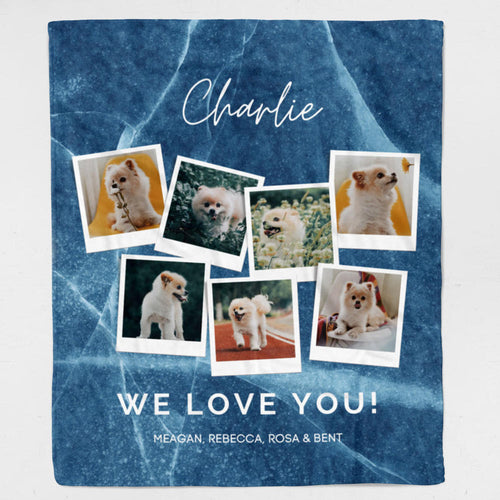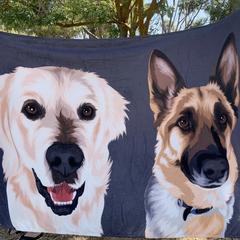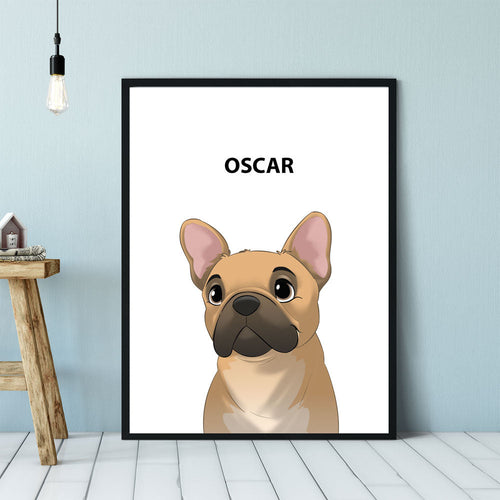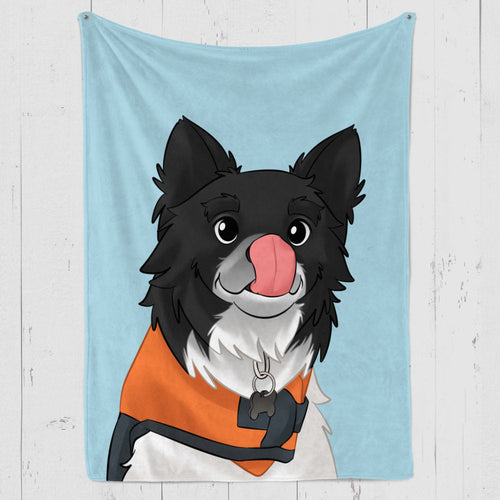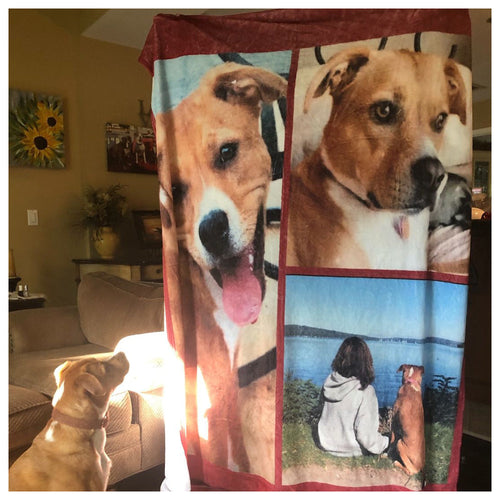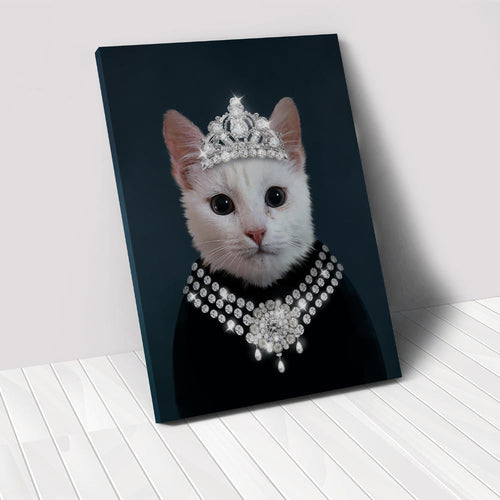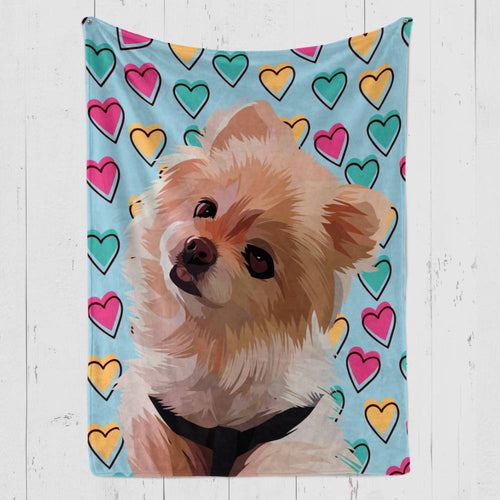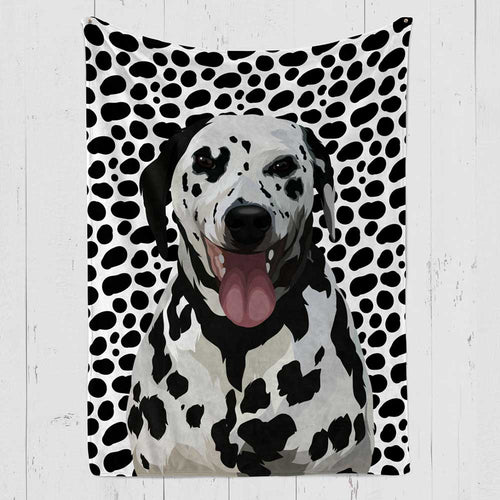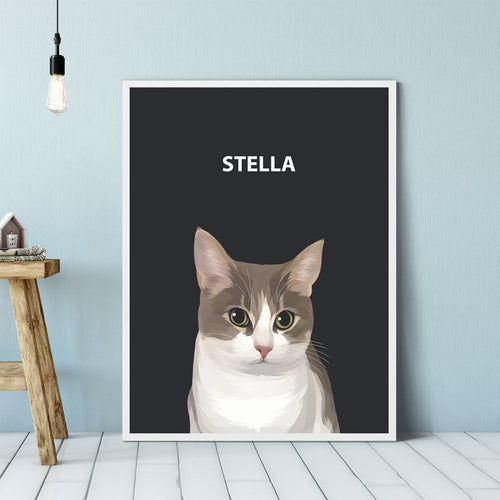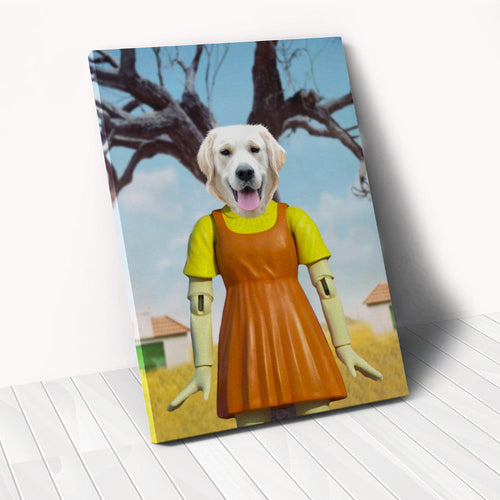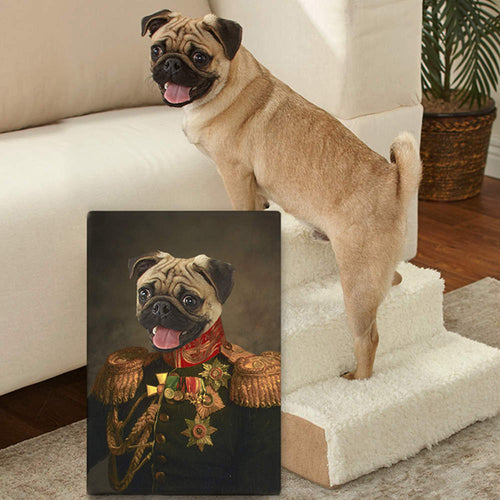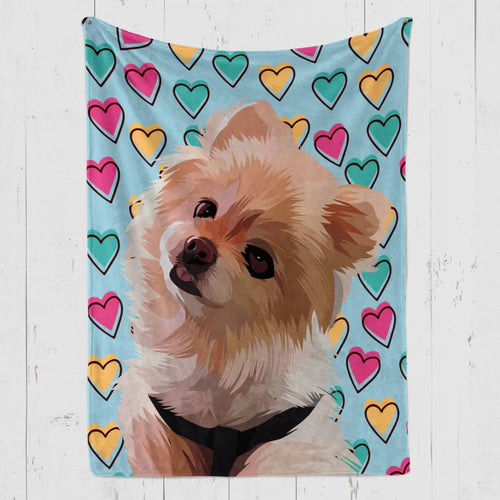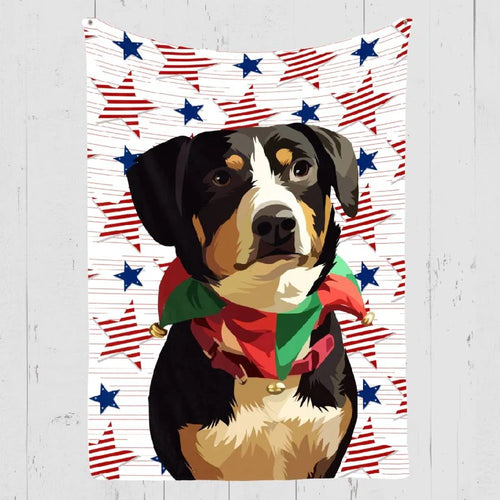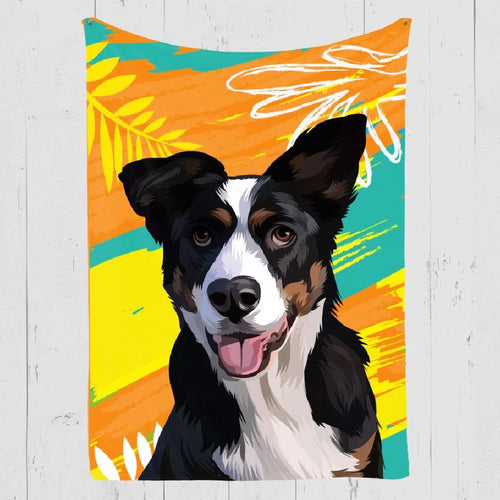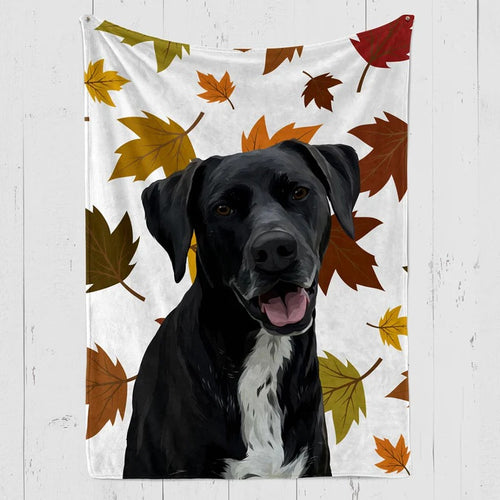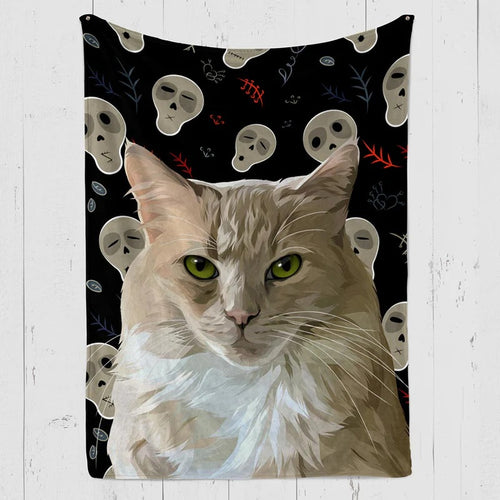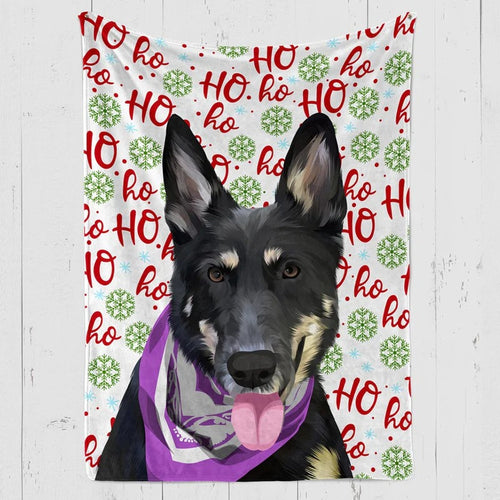
While a dog collar can be used to carry tags, every dog needs a harness since it gives additional support and safety while taking your dog for a walk or run in the park. Although attaining the perfect fit on a collar is often relatively simple because there is only one modification point, harnesses must fit properly at several spots on the body, necessitating the purchase of the right harness size and careful adjustment to your dog's body.
In this article, we'll go over some tips and tactics for determining the best size for your dog's harness. Continue reading!
What Factors Should You Consider While Choosing a Harness for Your Dog?
Dog harnesses come in a variety of sizes and styles. It is critical to weigh all of the possibilities and select the harness that is ideal for your little furry friend and you too.
1. The size and mood of the dog:
To choose what type of size can be chosen to design a dog harness, consider its weight, essence, and breed. Different dog harness styles fit differently.
You can verify that you buy the right size by measuring around your dog's rib cage. Harnesses that are too close-knit may cause pain for your dog, whilst harnesses that are too slack may allow your dog to slide out.
You may put the dog harness to the test by letting your dog walk and play all around the house with it on to ensure it doesn't move approximately on their body, releasing or rubbing painfully against your dog’s skin.
2. Design of the harness:
Assess the amount or how strongly your pet pulls while selecting a particular harness. The improper harness can encourage your dog to tug you around.
What are Some of the Most Common Types of Dog Harness Available?
Here’s a list of some of the most common types of harnesses that you can choose for your dog:
1. Flat-buckle collar

Flat-buckle collars are the most prevalent style of dog harness. This typical dog collar has a simple buckle closing and a simple design. This can be a really good choice for your pet who can easily go with you neither pulling nor attempting to escape.
2. Martingale collar
This collar was designed for dogs with small heads. It prevents worried or fearful pets from escaping.
The collar is made of a size of textile with rings on both ends. The leash hooks to one of the rings when your dog attempts to escape and tightens without covering them.
3. Body harness

If your dog is small-sized, you can go for a harness with a back connection. In addition to giving you more control than using a leash alone, it safeguards your dog's throat in case of pulling.
When you are going to run or hike along with your dog, it is highly recommended that you use a long-length teaching leash attached to a body harness.
4. Front-hook harness
Having a hook attached to the top of the dog's chest protects this apparatus. As it is fixed to the front side of your dog's body, it provides you with leverage as you walk with him.
5. Head halter

This type of harness is meant to wiggle around your pet’s head right after the ears, with another strap wrapping over the muzzle. This type is ideal for large, muscular dogs who enjoy pulling. As this part is worn around the muzzle of the dog, you need to adjust it properly.
Though, the primary purpose of this halter is not made to be utilized to jerk or forcibly pull your dog. Instead, it is designed to be used as a tool to point your dog in your desired direction gently.
How Do You Select the Best Harness for Your Dog?
Purchasing a puppy harness is a little different. Puppies grow quickly, and there are numerous factors to consider. When purchasing a puppy harness, keep the following aspects in mind:
1. Purchase a harness that is adjustable and has enough area for the pup to develop. Puppies develop and change size at an astonishing rate, especially during the first few weeks of life.
2. However, do not buy a harness that is too big or too loose for your puppy because a harness that is overly large causes a slew of issues.
3. The puppy may easily remove or eat the collar from his neck. Additionally, training a puppy while wearing a loose collar will be next to impossible.
How do I measure my dog to determine the correct harness size?
Every harness is made to fit somewhat different dog sizes; a dog that wears a size "small" in one brand of harness may need a "medium" in another. However, typical size standards might still be a helpful starting point when deciding on a harness size for your dog.
You can use your dog's measurements and the brand's sizing standards to select the appropriate size for your dog once you've narrowed it down to two sizes.
|
Size of Harness |
Chest Measurement |
Weight |
Sample Breeds |
|
XX-Small |
8-10” |
Less than 5 lbs |
Teacup Yorkshire Terrier; Chihuahua |
|
X-Small |
10-15” |
5-10 lbs |
Maltese Toy Poodle; Dachshund |
|
Small |
15-22” |
10-25 lbs |
Pekingese; Miniature Schnauzer; Cavalier King Charles |
|
Medium |
20-30” |
24-50 lbs |
Beagle; Corgi; Cocker Spaniel |
|
Large |
25-40” |
40-70 lbs |
Pit Bull; Basset Hound; Dalmatian |
|
X-Large |
31-41” |
Greater than 70 lbs |
Great Dane Rottweiler; German Shepherd |
Again, keep in mind that they are only guidelines. Each brand can accommodate dogs of varying weights and chest circumferences. Even so, having a broad notion of the size your dog is going to require will help you narrow down your options when looking for a harness!
What are the Benefits of Using Harnesses for Dogs?
Harnesses and collars are both appropriate solutions for most dogs; selecting one over the other is primarily a question of personal preference. However, there are several advantages to walking your dog on a harness that may make it a preferable alternative for some dogs.
1. For starters, a harness relieves pressure on your dog's neck and throat more than a collar.
2. If your dog has a past of neck or back problems, such as intervertebral disc disease, your veterinarian may advise you to use a harness to reduce strain on the spine.
3. Dogs with tracheal collapse or similar upper airway difficulties may benefit more from a harness than a collar since a harness reduces the pressure on the neck that might occur when your dog strains at the end of the leash.
4. When a dog tugs on a no-pull harness, the pressure from the leash causes the dog to spin in a circle, looking at their owner.
5. Most dogs rapidly realize that pulling does not provide them with the desired results. Therefore, they stop pulling from the leash.
What are the Steps Involved in Measuring a Dog for a Harness?

Typically, a dog-size chart indicates four measurements: girth around the neck, chest, body length, and weight. If you combine all these measures and weights, you will know the proper harness size for your dog.
1. Neck Circumference
The measurement of the circumference of your dog's neck is generally calculated where the collar meets the neck. All you need to this cover the tape and measure slightly below the narrowest section of your dog's neck, where he usually wears a collar. In case you're not sure, look slightly above your dog's shoulders.
Start just above their shoulders, and then wrap the tape through the upper region of their chest and near the opposite end.
Remember that two fingers will need to fit securely around your pet and the harness, therefore, account for that while measuring.
2. Chest Circumference
The rim of your dog's chested breed is measured as the chest girth. To determine your dog's girth, find the largest region of his chest. The widest section of a dog's chest is normally behind what is known as the armpits and is measured from the bottom of the rib cage.
3. Body Length
The length of your dog's body measures from the bottom region of its base neck or from the starting point of its upper body to the lower part of the hip region.
Takeaway
If you're thinking about switching from a collar to a harness, you ought to understand how to measure a dog for a harness. To achieve the proper fit, you must first purchase a collar appropriate for your dog's weight and chest diameter, then carefully adjust all of the harness straps so that they fit your dog properly.
Frequently Asked Questions
For harness measurement, what is a dog's girth?
Visit a harness manufacturer's site or study the packaging while in a store to get the correct harness size for your dog. The majority of manufacturers produce harnesses with changeable sizes. One type of harness, for example, claims that a medium harness will suit dogs with girths ranging from 32 inches (81 centimeters) to 48 inches (122 centimetres).
How tight should a dog's harness be?
When putting a harness on your dog, it is critical that it be neither too tight nor too loose... You want the perfect fit. A tight harness can cause pinching and chafing, but a loose harness might enable your dog to run away.
Are dog harnesses available in breed-specific sizes?
All dogs, no matter their size or breed, must be measured in the same manner. However, measuring your dog is a straightforward operation, and the dimensions should be universal when it comes to determining the proper size and design. The length and width of the dog's neck and chest are frequently used to size harnesses.
What should you do if the measurements of my dog lie between two harness sizes?
If your dog's measurements lie between two sizes, go with the smaller one for the best fit. Adjustable straps on a well-made harness provide for a more tailored fit.
Sources (Website Name And Links)
- https://www.coastalpet.com/blog/want-to-learn-how-to-choose-the-right-harness-for-your-dog/
- https://www.kurgo.com/how-to-measure-your-dog-3-easy-steps
- https://www.coastalpet.com/blog/want-to-learn-how-to-choose-the-right-harness-for-your-dog/
- https://www.kurgo.com/how-to-measure-your-dog-3-easy-steps
- https://worldanimalfoundation.org/dogs/measure-dog-for-a-harness/
- https://be.chewy.com/measuring-dog-harness/
- https://www.rover.com/blog/how-to-measure-dog-harness-clothes-costumes-guide/
Recommended Articles :
Latest Review on Woof Blankets
To have such a masterpiece by my side every day is a gift for me and my memories with Rex. Thank you WoofBlankets for such an opportunity to recreate his image on a blanket.Lara o’ Miguel US, California
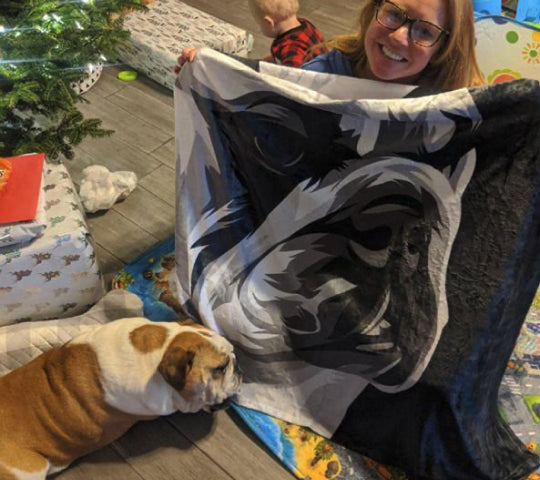
COLLECTION WORTH EVERY PENNY
BEST SELLERS
-
Woofy Single Color Custom Pet Blanket
![Woofy Single Custom Pet Blanket – Woof Blanket]()
- -41%
BlanketsSHOP NOW- Regular price
- from $64.95
- Sale price
- from $64.95
- Regular price
-
$109.95 - Unit price
- per
Sold out -
Exclusive Christmas Custom Pet Blanket
![Exclusive Custom Pet Blanket]()
- -39%
BlanketsSHOP NOW- Regular price
- from $69.95
- Sale price
- from $69.95
- Regular price
-
$114.95 - Unit price
- per
Sold out -
Christmas Custom Pet Blanket
![Christmas Custom Pet Blanket - Custom Dog Blankets]()
- -40%
BlanketsSHOP NOW- Regular price
- from $69.95
- Sale price
- from $69.95
- Regular price
-
$115.95 - Unit price
- per
Sold out -
Watercolor Pet Portraits
![]() SHOP NOW
SHOP NOW- Regular price
- from $59.95
- Sale price
- from $59.95
- Regular price
-
- Unit price
- per
Sold out -
Woofy Christmas Custom Dog Blanket
![Woofy Christmas Custom Dog Blanket]()
- -39%
BlanketsSHOP NOW- Regular price
- from $69.95
- Sale price
- from $69.95
- Regular price
-
$114.95 - Unit price
- per
Sold out -
Modern Pet Owner Portrait
![]()
- -32%
CanvasSHOP NOW- Regular price
- from $84.95
- Sale price
- from $84.95
- Regular price
-
$124.95 - Unit price
- per
Sold out -
Woof Splash Custom Pet Blanket
![Woof Splash Custom Pet Blanket]()
- -39%
BlanketsSHOP NOW- Regular price
- from $69.95
- Sale price
- from $69.95
- Regular price
-
$114.95 - Unit price
- per
Sold out -
The Admiral - Custom Pet Portrait
![The Admiral - Custom Pet Portrait Online]()
- NEW
- -25%
CanvasSHOP NOW- Regular price
- from $59.95
- Sale price
- from $59.95
- Regular price
-
$79.95 - Unit price
- per
Sold out -
Wings of Loyalty - Custom Pet Portrait
![]()
- NEW
CanvasSHOP NOW- Regular price
- from $59.95
- Sale price
- from $59.95
- Regular price
-
- Unit price
- per
Sold out -
Pet Memorial Custom Photo Collage Blanket
![Personalized pet memorial quilt with photos]()
- -41%
BlanketsSHOP NOW- Regular price
- from $64.95
- Sale price
- from $64.95
- Regular price
-
$109.95 - Unit price
- per
Sold out -
Celestial Paws - Custom Pet Portrait
![]() CanvasSHOP NOW
CanvasSHOP NOW- Regular price
- from $59.95
- Sale price
- from $59.95
- Regular price
-
- Unit price
- per
Sold out -
The Loyal Soul - Custom Pet Portrait
![]()
- NEW
SHOP NOW- Regular price
- from $59.95
- Sale price
- from $59.95
- Regular price
-
- Unit price
- per
Sold out -
Cartoonized Pet Portraits (New)
![Cartoonized Pet Custom Portraits Online]()
- -36%
SHOP NOW- Regular price
- from $59.95
- Sale price
- from $59.95
- Regular price
-
$93.95 - Unit price
- per
Sold out -
The French Sailor - Custom Pet Portrait
![]()
- -25%
CanvasSHOP NOW- Regular price
- from $59.95
- Sale price
- from $59.95
- Regular price
-
$79.95 - Unit price
- per
Sold out -
The Policeman - Custom Pet Portrait
![]()
- NEW
- -25%
CanvasSHOP NOW- Regular price
- from $59.95
- Sale price
- from $59.95
- Regular price
-
$79.95 - Unit price
- per
Sold out -
The General - Custom Pet Portrait
![]()
- NEW
- -25%
CanvasSHOP NOW- Regular price
- from $59.95
- Sale price
- from $59.95
- Regular price
-
$79.95 - Unit price
- per
Sold out -
Woof Love Custom Pet Blanket
![Woof Love Custom Pet Blanket]()
- -39%
BlanketsSHOP NOW- Regular price
- from $69.95
- Sale price
- from $69.95
- Regular price
-
$114.95 - Unit price
- per
Sold out -
Summer Time Custom Pet Blanket
![Summer Time Custom Pet Blanket]()
- -39%
BlanketsSHOP NOW- Regular price
- from $69.95
- Sale price
- from $69.95
- Regular price
-
$114.95 - Unit price
- per
Sold out -
The Ambassador - Custom Pet Portrait
![The Ambassador - Custom Pet Portrait Online]()
- NEW
- -25%
CanvasSHOP NOW- Regular price
- from $59.95
- Sale price
- from $59.95
- Regular price
-
$79.95 - Unit price
- per
Sold out -
Fall In Love Custom Pet Blanket
![Fall In Love Custom Dog Blanket]()
- NEW
- -39%
BlanketsSHOP NOW- Regular price
- from $69.95
- Sale price
- from $69.95
- Regular price
-
$114.95 - Unit price
- per
Sold out -
The Classy Lady - Custom Pet Portrait
![The Classy Lady]()
- NEW
- -25%
CanvasSHOP NOW- Regular price
- from $59.95
- Sale price
- from $59.95
- Regular price
-
$79.95 - Unit price
- per
Sold out -
The Duke - Custom Pet Portrait
![The Duke - Custom Pet Portrait]()
- NEW
- -25%
CanvasSHOP NOW- Regular price
- from $59.95
- Sale price
- from $59.95
- Regular price
-
$79.95 - Unit price
- per
Sold out -
Dog In Suit- Custom Pet Portrait
![Dash Dog In Suit- Custom Pet Portrait Online]()
- NEW
- -25%
CanvasSHOP NOW- Regular price
- from $59.95
- Sale price
- from $59.95
- Regular price
-
$79.95 - Unit price
- per
Sold out -
The Princess - Custom Pet Portrait
![]()
- NEW
- -25%
CanvasSHOP NOW- Regular price
- from $59.95
- Sale price
- from $59.95
- Regular price
-
$79.95 - Unit price
- per
Sold out -
Modern Pet Portrait with One Mug
![Modern Pet Portrait with One Mug]()
- -25%
Print MaterialSHOP NOW- Regular price
- from $99.95
- Sale price
- from $99.95
- Regular price
-
$133.95 - Unit price
- per
Sold out -
The Aristocrat - Custom Pet Portrait
![The Aristocrat - Custom Pet Portrait At Best Price]()
- NEW
- -25%
CanvasSHOP NOW- Regular price
- from $59.95
- Sale price
- from $59.95
- Regular price
-
$79.95 - Unit price
- per
Sold out -
Single Color Custom Blanket with 1 Mug
![Single Color Custom Blanket with 1 Mug]() BlanketsSHOP NOW
BlanketsSHOP NOW- Regular price
- from $99.95
- Sale price
- from $99.95
- Regular price
-
- Unit price
- per
Sold out -
Single Color Custom Blanket with 2 Pillows
![Single Color Custom Pet Blanket with 2 Pillows]()
- -21%
BlanketsSHOP NOW- Regular price
- from $99.95
- Sale price
- from $99.95
- Regular price
-
$125.95 - Unit price
- per
Sold out -
The Dog in Suit Custom Pet Mug
![]()
- -20%
MugsSHOP NOW- Regular price
- $39.95
- Sale price
- $39.95
- Regular price
-
$49.95 - Unit price
- per
Sold out -
Angel Custom Pet Mug
![]()
- -20%
MugsSHOP NOW- Regular price
- $39.95
- Sale price
- $39.95
- Regular price
-
$49.95 - Unit price
- per
Sold out -
This Human Belongs To - Custom Pet Mug
![]()
- NEW
- -20%
MugsSHOP NOW- Regular price
- $39.95
- Sale price
- $39.95
- Regular price
-
$49.95 - Unit price
- per
Sold out -
It's Not Dog Hair Custom Pet Mug
![]()
- NEW
- -20%
MugsSHOP NOW- Regular price
- $39.95
- Sale price
- $39.95
- Regular price
-
$49.95 - Unit price
- per
Sold out -
My Dog Is My Valentine Custom Pet Mug
![]()
- NEW
- -20%
MugsSHOP NOW- Regular price
- $39.95
- Sale price
- $39.95
- Regular price
-
$49.95 - Unit price
- per
Sold out -
3 Photos With Message Custom Pet Mug
![]()
- NEW
- -20%
MugsSHOP NOW- Regular price
- $39.95
- Sale price
- $39.95
- Regular price
-
$49.95 - Unit price
- per
Sold out -
My Valentine Has Four Legs- Personalized Mugs
![]()
- NEW
- -20%
MugsSHOP NOW- Regular price
- $39.95
- Sale price
- $39.95
- Regular price
-
$49.95 - Unit price
- per
Sold out -
Dog Mamma Custom Pet Coffee Mug
![]()
- -20%
MugsSHOP NOW- Regular price
- $39.95
- Sale price
- $39.95
- Regular price
-
$49.95 - Unit price
- per
Sold out -
Uncle Sam - Custom Pet Portrait
![]()
- NEW
- -25%
CanvasSHOP NOW- Regular price
- from $59.95
- Sale price
- from $59.95
- Regular price
-
$79.95 - Unit price
- per
Sold out -
The Revolutionary Emperor - Custom Pet Portrait
![]()
- NEW
- -25%
CanvasSHOP NOW- Regular price
- from $59.95
- Sale price
- from $59.95
- Regular price
-
$79.95 - Unit price
- per
Sold out -
The Princess Paws - Custom Pet Portrait
![]()
- -25%
CanvasSHOP NOW- Regular price
- from $59.95
- Sale price
- from $59.95
- Regular price
-
$79.95 - Unit price
- per
Sold out -
The Dark Crusader Knight - Custom Pet Portrait
![]()
- -25%
CanvasSHOP NOW- Regular price
- from $59.95
- Sale price
- from $59.95
- Regular price
-
$79.95 - Unit price
- per
Sold out
